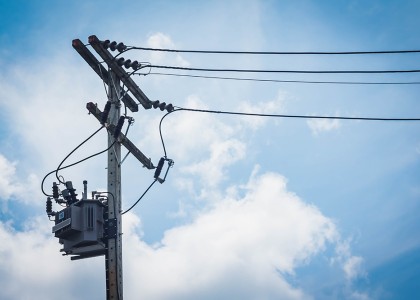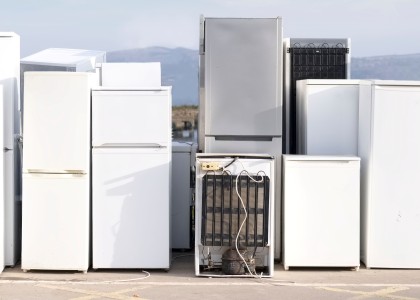Energy efficiency appears prominently in recent proposals to address climate change, underscoring its ability to deliver dramatic cuts in greenhouse gas emissions.
Nationwide building retrofits, net zero construction, fuel efficiency, electric vehicles, and industrial decarbonization — cornerstones of ACEEE’s new Call to Action — are features of several sweeping proposals. Research shows that these and other robust efficiency-related measures can halve U.S. energy use and emissions by 2050.
This week, former Vice President Joe Biden unveiled a climate plan that consolidates several Democratic proposals. By spending $2 trillion over four years, it aims to slash emissions, revive the economy, reduce racial inequities, and by 2035, derive all electricity from carbon-free sources. It sees energy efficiency as a key way to cut emissions and make energy more affordable for low-income households and communities of color, which have been disproportionately affected by COVID-19 and climate change.
Earlier this year, a group of House Republicans led by House Minority Leader Rep. Kevin McCarthy (R-CA) introduced its own climate plan. This plan focuses on removing carbon dioxide from the air rather than reducing energy waste or promoting zero-carbon energy sources. It seeks to plant a trillion trees, which President Trump has endorsed, and expand a tax break, which Trump signed in 2018, to capture and sequester carbon dioxide before it leaves smokestacks. It would also increase federal R&D funding for carbon capture at natural gas plants.
The Biden plan has multiple efficiency provisions. It calls for energy-efficient retrofits of four million commercial buildings and weatherization of two million homes over four years, which it estimates will create at least one million jobs. It proposes building performance standards, strict building codes as well as cash rebates and low-cost financing to upgrade and electrify home appliances and install more efficient windows. It suggests a technology-neutral Energy Efficiency and Clean Electricity Standard (EECES) for utilities and grid operators.
In the transportation sector, Biden proposes increased spending on public transit, walkways, and bike lanes. He seeks to establish ambitious fuel economy standards; provide consumer rebates to swap old, less energy-efficient vehicles for newer, more efficient ones; buy clean vehicles for federal, state, tribal, postal, and local fleets; promote electric vehicles and their charging infrastructure; and convert all 500,000 U.S. school buses to zero emissions.
The plan also mentions the need to decarbonize industry. It calls for creating an Advanced Research Projects Agency on Climate, a cross-agency ARPA-C, that would — among other things — advance technologies for decarbonizing industrial heat needed to make steel, concrete, and chemicals and for developing carbon-neutral construction materials.
Biden’s new plan has similarities to the House Select Committee on Climate Crisis’ recent majority report, and incorporates many of the recommendations of the Biden-Sanders Unity Task Force, which was co-crafted with supporters of Sen. Bernie Sanders (I-VT).
While Rep. McCarthy’s climate plan focuses on carbon sequestration, Republicans have included energy efficiency measures in several bills. For example, the pending bipartisan Energy Savings and Industrial Competitiveness Act by Sens. Rob Portman (R-OH) and Jeanne Shaheen (D-NH) would promote better building energy codes and mortgage lending that recognizes the value of efficiency in homes. An ACEEE analysis shows it would cut energy bills by $51 billion, save 32 quadrillion Btu of energy, and avoid 1.3 billion tons of carbon dioxide emissions cumulatively for measures through 2050.
Conservatives for Responsible Energy Solutions (CRES), a nonprofit that engages GOP policymakers, has endorsed the Portman-Shaheen bill and other bipartisan ones. Such bills include the New Home Energy Efficiency Act to extend and update the home energy efficiency tax credit through 2022 and the Streamlining Energy Efficiency for Schools Act to help schools make efficiency retrofits.
What happens to any of these proposals or pending bills remains to be seen. Congressional approval could be difficult if Congress remains largely deadlocked by partisanship. Yet the inclusion of robust energy efficiency measures highlights its importance in the fight against climate change.



